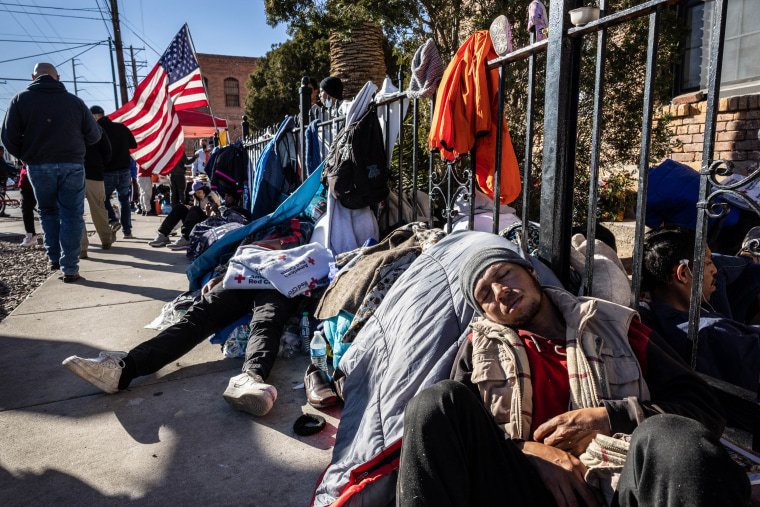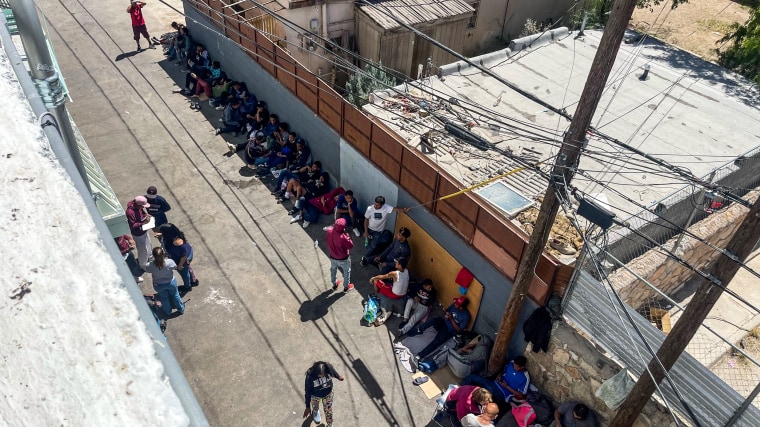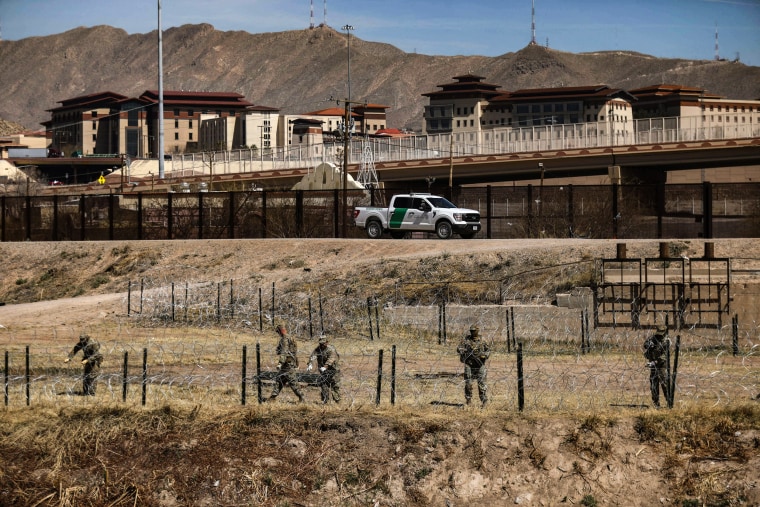As the Biden administration braces for what is expected to be a record surge in migration across the southern border when Covid restrictions officially end May 11, federal immigration authorities and local officials are already short on the money and space needed to handle migrants.
On Sunday, about 18,000 migrants were in temporary Customs and Border Protection processing centers along the southern border, according to two officials of the Department of Homeland Security, already close to capacity under current budget levels.
A DHS spokesman said the agency will be able to ramp up capacity to meet the needs of the expected increase in migration, citing a plan from Homeland Security Secretary Alejandro Mayorkas that will seek to remove migrants who do not qualify for asylum from the country more quickly.
But a DHS official speaking on the condition of anonymity said there is “anxiety” within the agency that under current funding and detention capacity levels, the agency will not be able to remove migrants quickly enough to prevent major bottlenecks along the southern border.
Customs and Border Protection Commissioner Troy Miller testified before Congress last week that he expects roughly 10,000 migrants to cross the border daily when the ban ends, doubling the current flow. Two DHS officials told NBC News the current immigration system at the U.S. border would be maxed out if numbers exceed 10,000, leaving Border Patrol and shelters without the capacity to take all undocumented migrants into temporary custody and process them.
DHS has told the White House it needs more than $3 billion from Congress to increase its capacity to shelter, process and transport migrants along the border, according to two sources familiar with the request. Some of the needed funding can be reprogrammed from other parts of the agency, but the sources said DHS still needs Congress to approve a supplemental budget act to cover the deficit.
More money from Congress seems unlikely, however, because Republicans have been unwilling to fund anything related to President Joe Biden’s border agenda, arguing his administration promotes an open border policy.

The Covid restriction known as Title 42 has blocked migrants from crossing the U.S.-Mexico border to seek asylum more than 2.5 million times since it was put in place at the start of the pandemic. It is the third time the Biden administration has been preparing to lift Title 42. The previous attempts were blocked by courts, but this time a court challenge does not seem likely to prevent the ban from lifting on May 11.
In El Paso, believed likely to become one of the centers of the surge, managers of local nonprofit groups that serve migrants estimate 1,000 are already sleeping on the streets. City officials say they need more funding from the federal government to cover expenses like transportation, staffing and city-run shelters when even larger crowds arrive.
“Right now, we are preparing for the worst case. I don’t know if we in the community are ready for it,” said John Martin, the deputy director of the Opportunity Center for the Homeless in El Paso. “Right now, we are picking up the tab. … We’re digging into our own pocket.”
Local officials in El Paso say the federal government already owes them money for the ongoing local response to border crossings. Speaking with reporters Monday, Deputy City Manager Mario D’Agostino said the city is awaiting a total of $25.8 million from the Federal Emergency Management Agency out of the total $40.2 million requested for fiscal year 2023. He said the city already has $14.4 million of the requested funds.
D’Agostino said he has received estimates that as many as 35,000 migrants are waiting just across the border in Ciudad Juárez and that the number was only growing daily as more migrants made their way to the Mexican city.
Nonprofit shelters in El Paso also say the government owes them money. Rescue Mission of El Paso estimates FEMA owes it $300,000, CEO Blake Barrow said.

On Wednesday, the Opportunity Center for the Homeless in El Paso had an estimated 150 migrants sleeping on the street outside the shelter because it was unable to accommodate all of those who needed beds, Martin said.
Barrow said, “The volume of people coming in is heavier than it was in December,” referring to the last time Title 42 was expected to lift and migrants began sleeping on the streets in frigid temperatures outside shelters.
In early January, days before Biden’s visit to El Paso, the Border Patrol began arresting migrants sleeping on the street.


